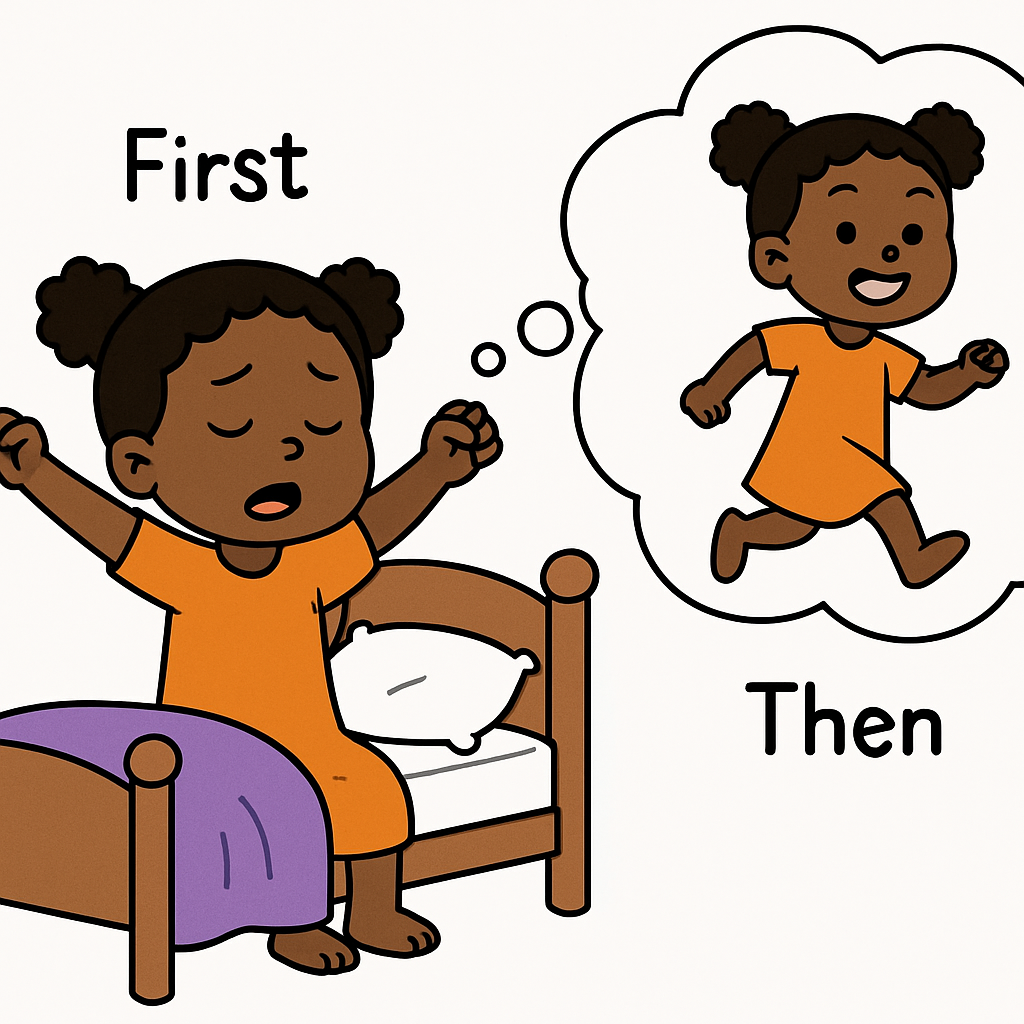Today, you'll be guiding your students through a series of fun and engaging activities designed to help them understand the concept of sequencing everyday activities using 'first/then' statements. This is a fundamental skill in coding, as it lays the foundation for understanding the logical order of coding instructions in future lessons.
The format of this lesson is:
Let's take a moment to recap everything we've learned about 'Bossy Words'!
Remember, 'Bossy Words' are simply the words we use when we're giving instructions or commands. They are the action words that tell someone to do something.
Just like in the game Simon Says, when you hear a bossy word, you know you have to perform an action. For example, words like:
'Sit' means you must sit down.
'Jump' means you must jump up.
'Clap' means you must clap your hands.
These commands are the most important part of coding! When we tell a character in Scratch Jr. what to do, we are just giving it a sequence of these clear, bossy instructions.
You are already experts at this game! Remember, Simon Says is the perfect way to practice giving and following precise commands—just like a computer does when we code.
Let's quickly review the rules, because these rules are the same when you code in Scratch Jr.:
Rule 1: The Command: You must only perform the action if the command begins with "Simon says".
Rule 2: Ignore: If the command does not start with "Simon says," you must freeze and ignore the instruction completely!
Listen carefully! This game reminds us that the computer only follows instructions when they are given perfectly, every single time.

Explain to your students that every activity, from brushing teeth to coding, has an order. 'First' means the thing at the start, and 'then' means what happens after.
Share these examples to get them thinking:
First, I wake up. Then, I get out of bed.
First, I put on my socks. Then, I put on my shoes.
First, I wash my hands. Then, I eat my lunch.
Now it's their turn! Ask the students to share their own examples, drawing on routines from your school day:
Brainstorm: "What happens when we come into the classroom in the morning? What do we do first, and what do we do then?" (E.g., First, I hang up my coat. Then, I sit at my desk.)
Prompting: Ask about lining up, art class, or cleaning up. Go around the room and let students share their sequences.
Now let read the story of a morning routine.